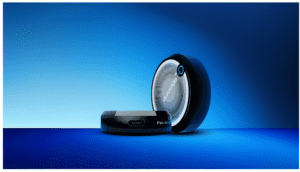Frozen Shoulder Symptoms
Frozen shoulder (also known as adhesive capsulitis) is a condition that leads to stiffness, pain, and limited mobility in the shoulder joint. This condition typically progresses through three stages: the freezing stage, the frozen stage, and the thawing stage. The symptoms of frozen shoulder can vary depending on the stage, but they commonly include pain, reduced range of motion, and difficulty performing routine tasks. Below, we explore the frozen shoulder symptoms in detail, focusing on how they manifest and how they can be managed.
What Are the Symptoms of Frozen Shoulder?
Frozen shoulder presents with several distinct symptoms that can significantly affect daily activities:
- Pain in the Shoulder
- One of the first signs of frozen shoulder is pain in the shoulder joint, particularly on the outer shoulder and upper arm. This pain may worsen with certain movements, such as lifting or reaching overhead.
- In the early stages, the pain is often dull and aching but can become sharp or intense, especially during activities that require shoulder movement.
- Stiffness and Limited Range of Motion
- As frozen shoulder progresses, stiffness becomes more prominent. Individuals may notice a gradual loss of range of motion, which makes it difficult to move the arm in various directions.
- Common movements, such as reaching behind the back or lifting the arm above the head, may become increasingly challenging.
- Night Pain
- Frozen shoulder pain can often intensify at night, making it difficult to sleep. This can lead to disturbed sleep patterns and may worsen the discomfort.
- Inability to Perform Daily Tasks
- Everyday tasks such as dressing, brushing hair, or reaching for objects on high shelves may become difficult or even impossible due to the shoulder’s limited mobility and pain.
Symptoms of Frozen Shoulder in Different Stages
Frozen shoulder progresses through three stages, each with its own set of symptoms
- Freezing Stage
- The freezing stage is characterized by increasing pain and stiffness. The shoulder joint becomes progressively more immobile, and movement becomes more painful.
- During this stage, which can last from 6 weeks to 9 months, the pain intensifies and can limit the ability to move the shoulder properly.
- Frozen Stage
- In the frozen stage, the pain may subside, but stiffness persists. The range of motion becomes severely limited, and the individual may struggle to perform even basic movements with the shoulder.
- This stage typically lasts between 4 to 12 months and can be frustrating due to the lack of progress in regaining movement.
- Thawing Stage
- The thawing stage marks the beginning of recovery. Gradually, the shoulder’s range of motion improves, and the stiffness reduces.
- The pain decreases, and the shoulder joint becomes more flexible, though it can take several months to fully regain function.
Other Associated Symptoms
In some cases, frozen shoulder can also cause discomfort in other parts of the body due to compensation. For example:
- Neck Pain: As individuals alter their posture or move in ways to avoid shoulder pain, neck pain can develop.
- Arm Pain: The pain may extend down the arm, especially during movement, as the muscles surrounding the shoulder become strained.
Symptoms of Frozen Shoulder in Women
Studies have shown that frozen shoulder is more common in women, particularly those aged 40 to 60. Hormonal changes, such as those experienced during menopause, may contribute to the development of frozen shoulder in women. The symptoms of frozen shoulder in women are typically the same, but the onset may be influenced by hormonal factors.
Frozen Shoulder Symptoms in the UK
In the UK, frozen shoulder is frequently diagnosed, and patients often experience difficulty getting timely access to physical therapy or treatments. Symptoms in the UK are similar to those seen globally, with patients reporting shoulder pain, stiffness, and difficulty moving the arm.
Treatment and Management of Frozen Shoulder Symptoms
The symptoms of frozen shoulder can be managed through a combination of physical therapy, medications, and injections. However, for some individuals, additional non-invasive treatments such as Curapod can significantly help in relieving symptoms.
Curapod, which uses electrical stimulation, helps with
- Pain Relief: The electrical impulses provided by Curapod block pain signals, alleviating the discomfort caused by frozen shoulder.
- Muscle Relaxation: It aids in relaxing the muscles around the shoulder joint, helping to reduce stiffness.
- Improving Mobility: Curapod enhances blood circulation, promoting healing and restoring the range of motion.

Using Curapod in conjunction with traditional treatments can accelerate recovery and provide relief from frozen shoulder symptoms.
The symptoms of frozen shoulder vary in severity but typically include pain, stiffness, and a limited range of motion in the shoulder joint. As the condition progresses through its stages, it may become increasingly difficult to perform daily activities. Early diagnosis and treatment, including physical therapy, medications, and the use of devices like Curapod, can help manage symptoms and speed up recovery. If you experience symptoms such as shoulder pain, stiffness, and difficulty moving your arm, it is essential to consult with a healthcare professional for appropriate diagnosis and treatment.
References
- Mayo Clinic, 2025. Frozen Shoulder: Symptoms and Causes. Available at: https://www.mayoclinic.org/diseases-conditions/frozen-shoulder/diagnosis-treatment/drc-20370892 [Accessed 28 February 2025].
- American Academy of Orthopaedic Surgeons (AAOS), 2025. Frozen Shoulder: Symptoms, Causes, and Treatment. Available at: https://www.aaos.org/diseases–conditions/frozen-shoulder/ [Accessed 28 February 2025].
- Spine-Health, 2025. Frozen Shoulder Treatment and Exercises. Available at: https://www.spine-health.com/conditions/shoulder-pain/frozen-shoulder [Accessed 28 February 2025].


